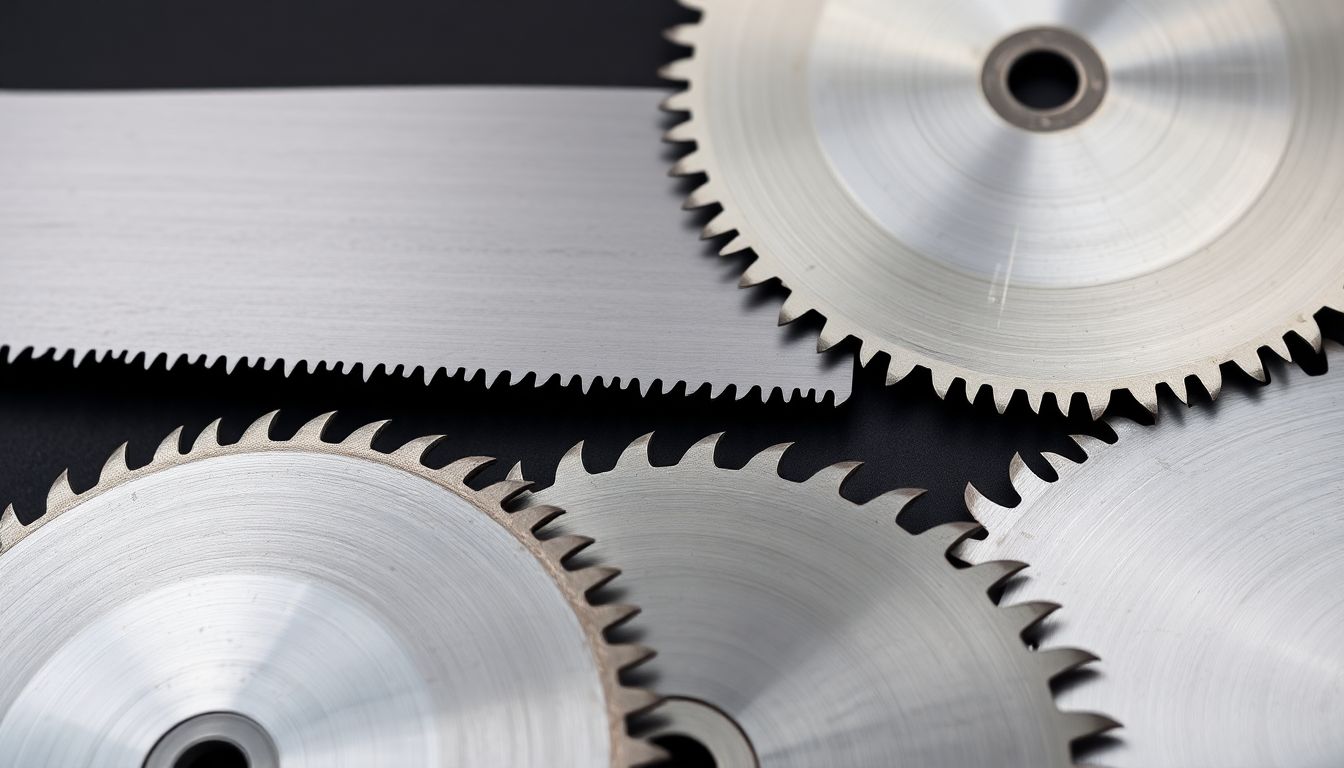Revolutionizing Your Cutting: The Ultimate Guide to Recipe Saw Blades

Recipe Saw Blades
Recipe Saw Blades
Recipe Saw Blades
Revolutionizing Your Cutting: The Ultimate Guide to Recipe Saw Blades
The efficiency of cutting tools can make or break projects in various industries, from woodworking to metal fabrication. A small difference in blade design can lead to significant improvements in precision and speed. Enter recipe saw blades, a tool crafted to elevate cutting performance. These specialized blades are essential for achieving the accuracy and finish needed in demanding applications. This guide will uncover the different types of recipe saw blades, their uses, and how to select the right one for your needs.
Understanding Recipe Saw Blades: Types and Materials
Defining "Recipe" Saw Blades
Recipe saw blades are custom-designed cutting blades tailored for specific tasks. Unlike standard blades, these are engineered to meet particular cutting requirements, enhancing performance and results.
Common Materials
Recipe saw blades are typically made from several materials, including:
- High-Speed Steel (HSS): Known for its hardness. Hardness rating: 60-65 HRC.
- Carbide: Offers great durability, ideal for tough cuts. Hardness rating: 70 HRC.
- Diamond: Provides the best edge retention and sharpness. Hardness rating: 10 on the Mohs scale.
Carbide blades, for instance, outlast steel blades by a factor of 10, making them suitable for rigorous applications.
Blade Tooth Geometry
Tooth design affects how a blade cuts. Common configurations include:
- Rip Tooth: Ideal for cutting along the grain of wood; provides fast, rough cuts.
- Crosscut Tooth: Designed for cutting across wood grain; offers a smooth finish.
- Combination Tooth: Balances ripping and crosscutting; versatile for various projects.
Understanding these geometries helps optimize cutting results for specific materials.
Applications of Recipe Saw Blades Across Industries
Woodworking Applications
In the woodworking sector, recipe saw blades are used in:
- Furniture Making: Precision cuts ensure clean joints and beautiful finishes.
- Cabinetry: Specific blade choices suit different types of wood, enhancing craftsmanship.
For example, a high-precision rip blade can help a furniture company achieve seamless edges on hardwood.
Metalworking Applications
Recipe saw blades are crucial in metalwork, providing:
- Ferrous Cutting: Blades designed for steel can remove material efficiently; cutting speed: up to 100 inches per minute.
- Non-ferrous Cutting: Blades for aluminum or brass maintain a clean edge without burrs, ensuring quality work.
Data shows that the right blade can improve material removal rates by up to 50%.
Other Industries
Beyond woodworking and metalworking, recipe saw blades find uses in:
- Plastics: Specialized blades cut thermoplastics without melting.
- Composites: Custom blades handle tough materials like fiberglass, ensuring precision.
These applications demonstrate the versatility of recipe saw blades in diverse settings.
Choosing the Right Recipe Saw Blade: Key Selection Criteria
Material Compatibility
Matching the blade material to the workpiece is essential. For instance, using a carbide blade on wood is effective, but it may not be appropriate for metal applications.
Tooth Geometry Selection
Choosing the right tooth design relates to the cut's quality and speed. For example, a fine tooth blade yields a cleaner finish but may cut slower. Always refer to manufacturers to make informed choices.
Blade Diameter and Thickness
Consider the project's specifics when selecting blade dimensions. Larger blades can cut thicker materials but may require more power. A thinner blade reduces waste yet may lack stability in heavy cuts.
Optimizing Performance: Maintenance and Safety
Blade Storage and Handling
Proper storage extends blade life. Store blades in a dry place, ideally in protective cases, to prevent bouncing or dulling.
Regular Inspection and Cleaning
Inspect blades regularly for damage such as chips or cracks. Clean blades to eliminate resin and debris, which enhances cutting efficiency.
Safety Precautions
Using recipe saw blades requires attention to safety. Always wear appropriate personal protective equipment (PPE) and follow machine operating guidelines. Statistics reveal that improper handling leads to a significant number of accidents each year.
Recipe Saw Blade Manufacturers and Suppliers: A Comparative Overview
Top Brands
Several reputable brands stand out for quality recipe saw blades, including:
- Freud: Known for innovative designs and durability.
- DeWalt: Offers a range of blades suitable for different materials.
- Makita: Renowned for performance in power tools and blades.
These brands are often linked to their online stores for easy purchase.
Sourcing Options
Recipe saw blades can be acquired from various sources:
- Online Retailers: Amazon, eBay, and specialized tool websites offer wide selection.
- Local Suppliers: Hardware stores and tool suppliers may carry specific models.
Cost Considerations
Prices for recipe saw blades vary significantly. You can find economical options for as low as $20, while high-end blades might reach upwards of $200. Factors influencing cost include material type, brand reputation, and special features.
Conclusion
Choosing the right recipe saw blade is crucial for optimal cutting performance and safety. From understanding the materials and tooth geometries to proper maintenance, knowledge is key. Take time to explore the options that best suit your needs, and consider sharing thoughts or questions in the comments section. Your cutting projects deserve nothing less than the best!
Join the conversation